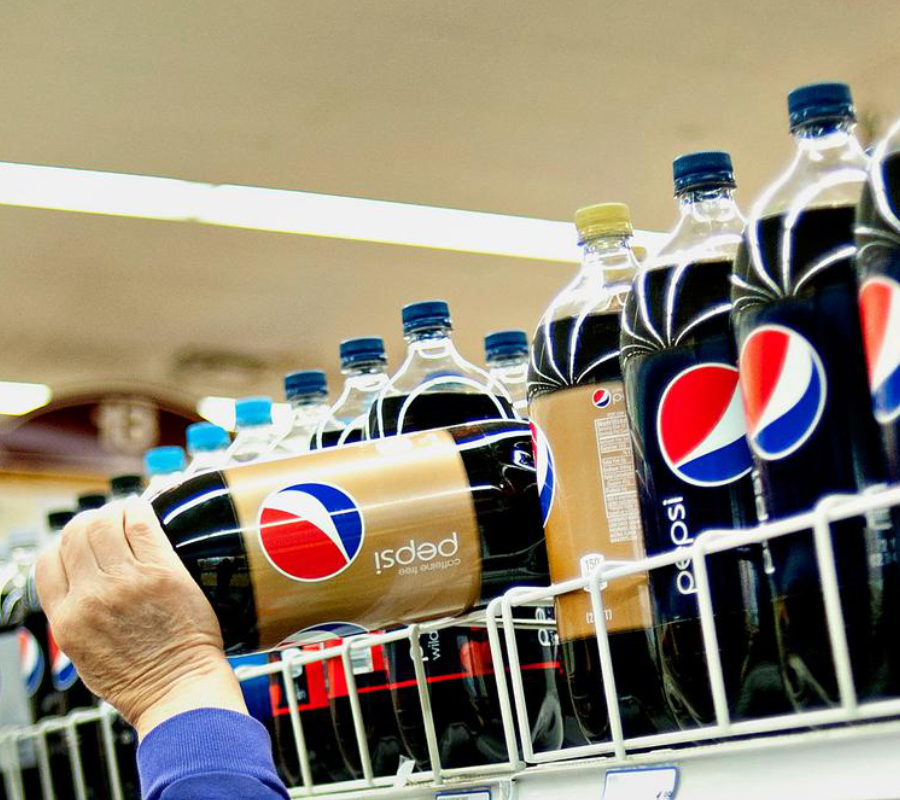PepsiCo Inc. (PEP.N) announced new targets Monday to reduce sugar, salt and fat in its snacks and soft drinks by 2025, as well as new goals to fight climate change. The move comes amid global concerns about rising obesity and pressure from many governments to tax or curb sugar consumption.
Based in New York, the company said it generated over $63 billion in net revenue in 2015 and people around the world consumed its products 1 billion times each day, according to a report by United Press International. Not only will PepsiCo introduce more zero and low-calorie beverages, but it will also reformulate the ones currently available in the market.

The company said its plans are based on consumer expectations, scientific research, and conversations with the main stakeholders, UPI reported. Its goals have also been thought to coincide with the United Nation’s 2030 Agenda for Sustainable Development.
The maker of Gatorade sports drinks, Lay’s potato chips, and Quaker oatmeal made it clear that by 2025 at least two-thirds of its global beverage volume would contain 100 calories or fewer from added sugar per 12 oz. serving. Today, a 12-ounce can of regular Pepsi-Cola contains 150 calories, and a 12-ounce can of Mountain Dew has 170 calories.
As for PepsiCo’s snacks, at least three-quarters of the global volume will contain 1.3 grams or less of sodium per calorie and 1.1 grams or less of saturated fat per 100 calories. A company spokesman said about 50 percent of volumes currently available in the market meet the sodium target, according to The Wall Street Journal.
Mehmood Khan, the company’s chief scientific officer of research and development, told Reuters that the evolution of science allows PepsiCo to have a better understanding of the new flavor ingredients that need less sweetening. He added that science also provides proprietary knowledge and access to those ingredients.
The pledges by 2015 include environmental targets such as improving water use efficiency in its direct agricultural supply chain by 15 percent in high-water risk areas. Among other goals, PepsiCo announced it will reduce food waste in its operations by 50 percent, and it also pledged to cut greenhouse gas emissions by 20 percent by the year 2030, The Wall Street Journal informed. Additionally, it will make 100 percent of its packaging recyclable.
Regarding social improvements, the company announced a $100 million investment to benefit initiatives targeting 12.5 million women worldwide. This project involves PepsiCo Foundation. As part of its 2006 efforts, it will continue to provide safe water for 25 million people living in high-risk areas.
“These new initiatives continue PepsiCo’s decade-long commitment to delivering Performance with Purpose, a pioneering vision launched in 2006 rooted in the fundamental belief that business success is inextricably linked to the sustainability of the world we share,” PepsiCo said in a statement, as reported by UPI.
PepsiCo’s most recent results
In 2009, the company set targets for 2020, including the reduction of added sugars and sodium by 25 percent. It also pledged to cut saturated fat by 15 percent. While PepsiCo reduced sodium by 12 percent and saturated fat by 3 percent between 2006 and 2015, added sugars rose 4 percent over the same period.
Khan said the company has improved its finances, according to the Report by Reuters. By reducing water, packaging, energy use and waste, PepsiCo has saved $600 million over the past five years. Moreover, average returns on investments have been better compared to the cost of capital, Khan noted.
About 25 percent of PepsiCo’s revenue in 2015 came from healthy products such as whole grains, vegetables, fruits, hydration, dairy, and protein, the company said. An interesting fact is that the company generates only 12 percent of its annual revenue from the cola brand it is famous for. In fact, 25 percent comes from carbonated soft drinks and the rest comes from juices like the Tropicana brand, waters, snacks, and dips.
Pressure from WHO and other experts
As part of its sustainability goals, PepsiCo’s greatest rival Coca-Cola announced that by 2020 low-calorie or no-calorie options would be available in every market. Both companies are reacting to increasing pressure from governments and health experts who link them to increasing rates of 8obesity and diabetes.
Based on the fact that more than one in three adults are overweight, the World Health Organization (WHO) last week issued recommendations for governments to adopt taxes on sugary drinks. This advice has been taken seriously in Philadelphia, where the soda tax will levy 1.5 cents per ounce on sugary beverages starting Jan. 1, according to UPI.

Source: Reuters
